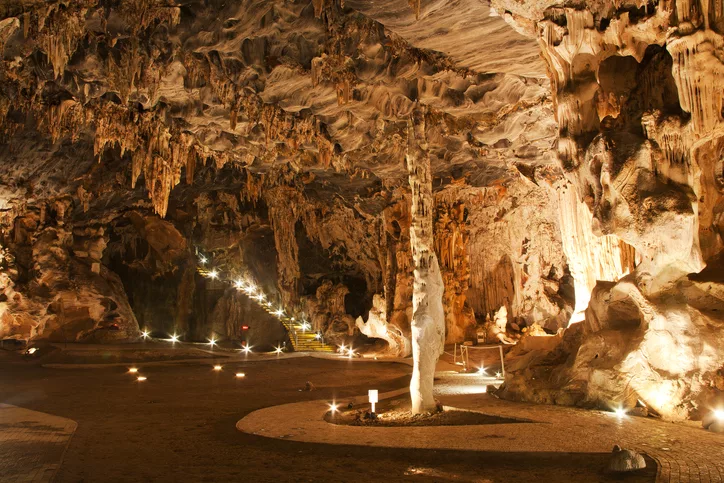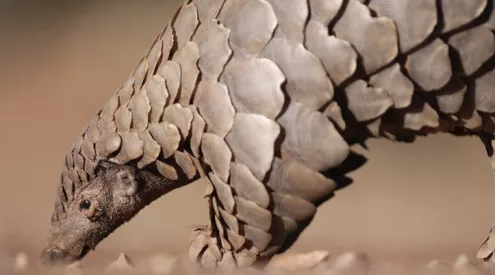Legend has it that centuries ago, a herder embarked on a quest to find his lost cattle and stumbled upon a breathtaking secret hidden beneath the Earth’s surface. This discovery marked the birth of the Cango Caves, a subterranean marvel located in South Africa. Over time, these caves have been explored and studied, revealing a rich history dating back to the Early Stone Age.

The Throne Room in the Cango Caves, which are situated on a limestone ridge parallel to the Swartberg Mountain Range in Oudtshoorn, Klein Karoo, South Africa
The tale of the Cango Caves begins with Jacobus van Zylin, a local farmer who bravely ventured into the caves in 1780, lending his name to the first hall discovered. While different versions of this story exist, meticulous research has confirmed this account as the most accurate. However, evidence suggests that the caves have been known to humanity since the Early Stone Age, with each passing year sparking further investigations and explorations.
In those early days, intrepid souls explored the depths of the caves armed only with self-made candles. These courageous individuals, their flames flickering in the darkness, unintentionally left their mark by scorching the cave ceilings. As we delve deeper into the Cango Caves, we encounter traces of early San habitation, their entrance once adorned with intricate ancient bushman art. Unfortunately, the passage of time has taken its toll on these delicate paintings, leaving them damaged and faded.
By the 19th century, the allure of the Cango Caves had captured the attention of tourists, even though the conservation efforts of the time were lacking. Visitors from far and wide marvelled at the beauty within, yet some inadvertently caused harm, breaking off sections of the delicate dripstone columns. Recognizing the need to preserve this natural wonder, the Governor of the Cape at the time, Lord Charles Somerset, enacted the first Caves Regulation in 1820. This groundbreaking regulation aimed to safeguard the caves as an environmental resource and prohibit the collection of souvenirs.
Within a limestone belt stretching 1.5 kilometres wide and almost 16 kilometres long, the Cango Caves boast a geological history that spans an astonishing 750 million years. The limestone formations were created through intricate chemical processes, shaped over time by water and the relentless force of rivers carving into the rock. When the caves finally dried out, they transformed into fossil caves, giving rise to speleothems—mineral deposits formed from groundwater. Stalactites, stalagmites, and helictites adorn every corner of the caves, casting a mesmerizing display of nature’s artistry upon the already breathtaking Cango Caves.
The caves themselves are divided into three sections: Cango One, Cango Two, and Cango Three, with many unexplored depths waiting to be discovered. It was the first full-time guide, Johnnie van Wassenaar, who made numerous significant discoveries during his 43-year tenure from 1891. Van Wassenaar played an instrumental role in introducing thousands of visitors to Cango One, which remains the most visited part of the caves to this day.
Today, the Cango Caves continue to captivate visitors with its awe-inspiring beauty and historical significance. The Cango Caves not only stand as a testament to an enduring fascination with the mysteries of the past but invite us to step into a world where ancient stories intertwine with the geological wonders of the present.
For more information, visit the Cango Caves website here.
Follow us on social media for more travel news, inspiration, and guides. You can also tag us to be featured.
TikTok | Instagram | Facebook | Twitter
ALSO READ: 10 unique attractions you never thought to visit in South Africa


















